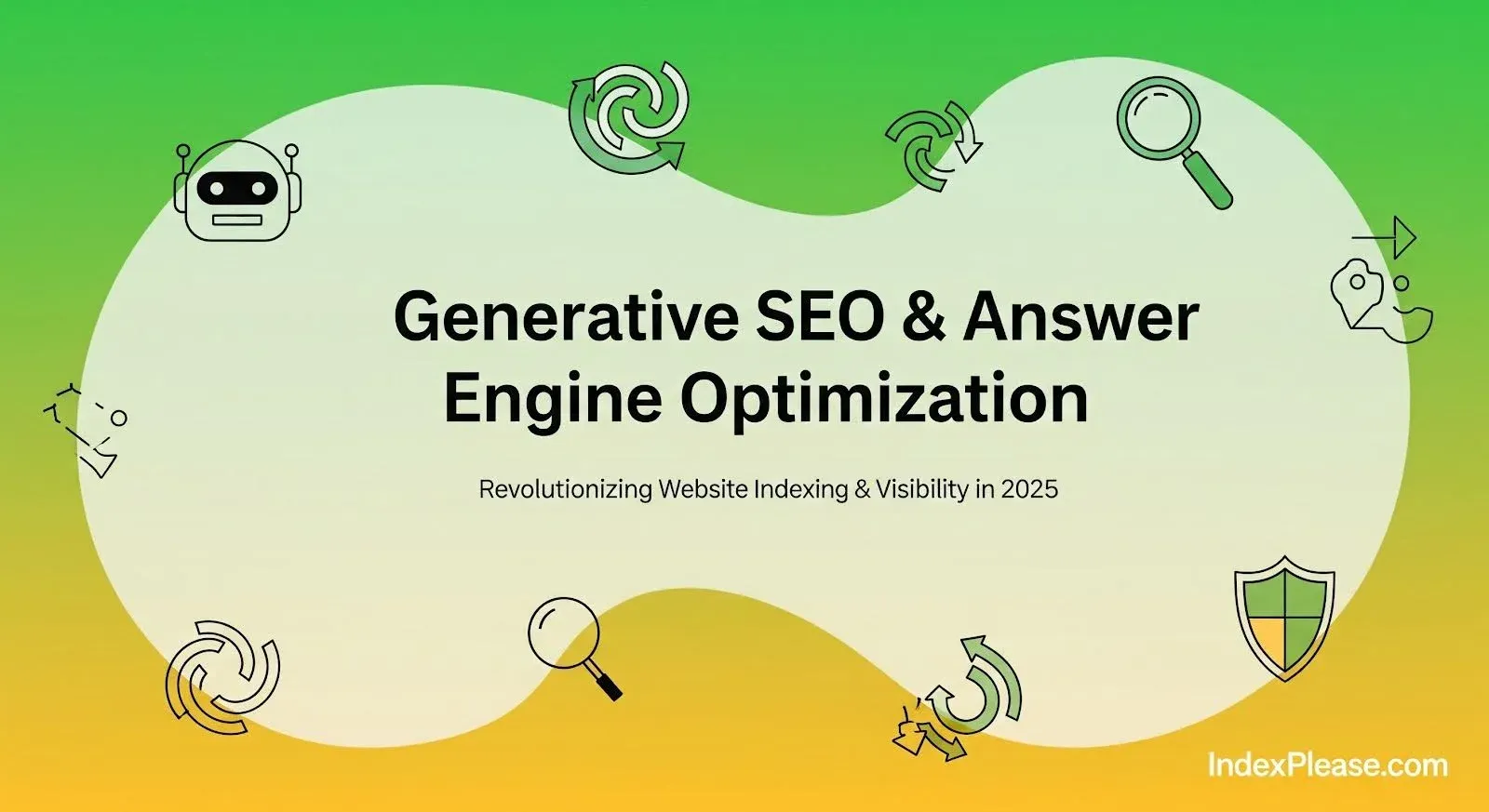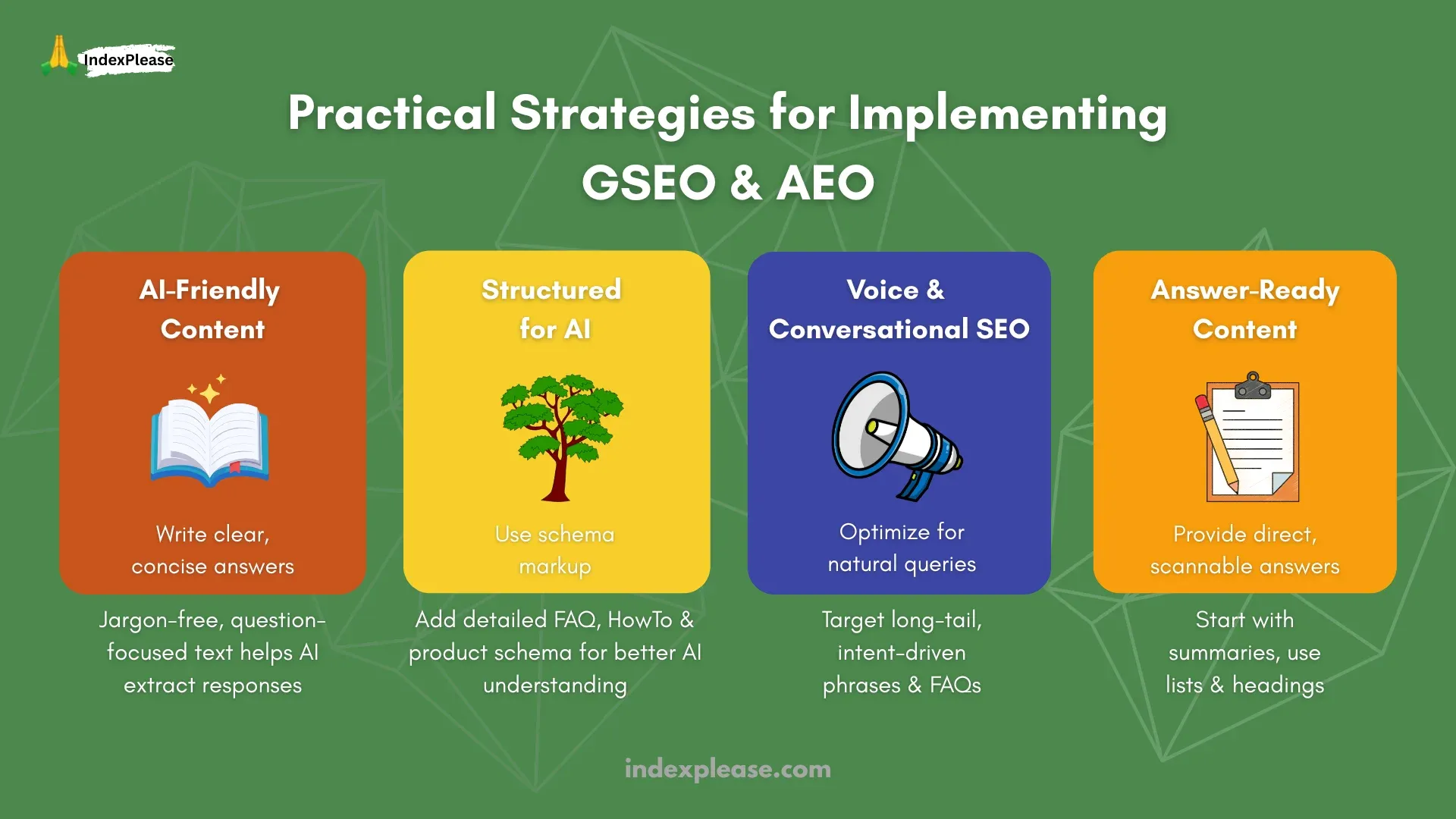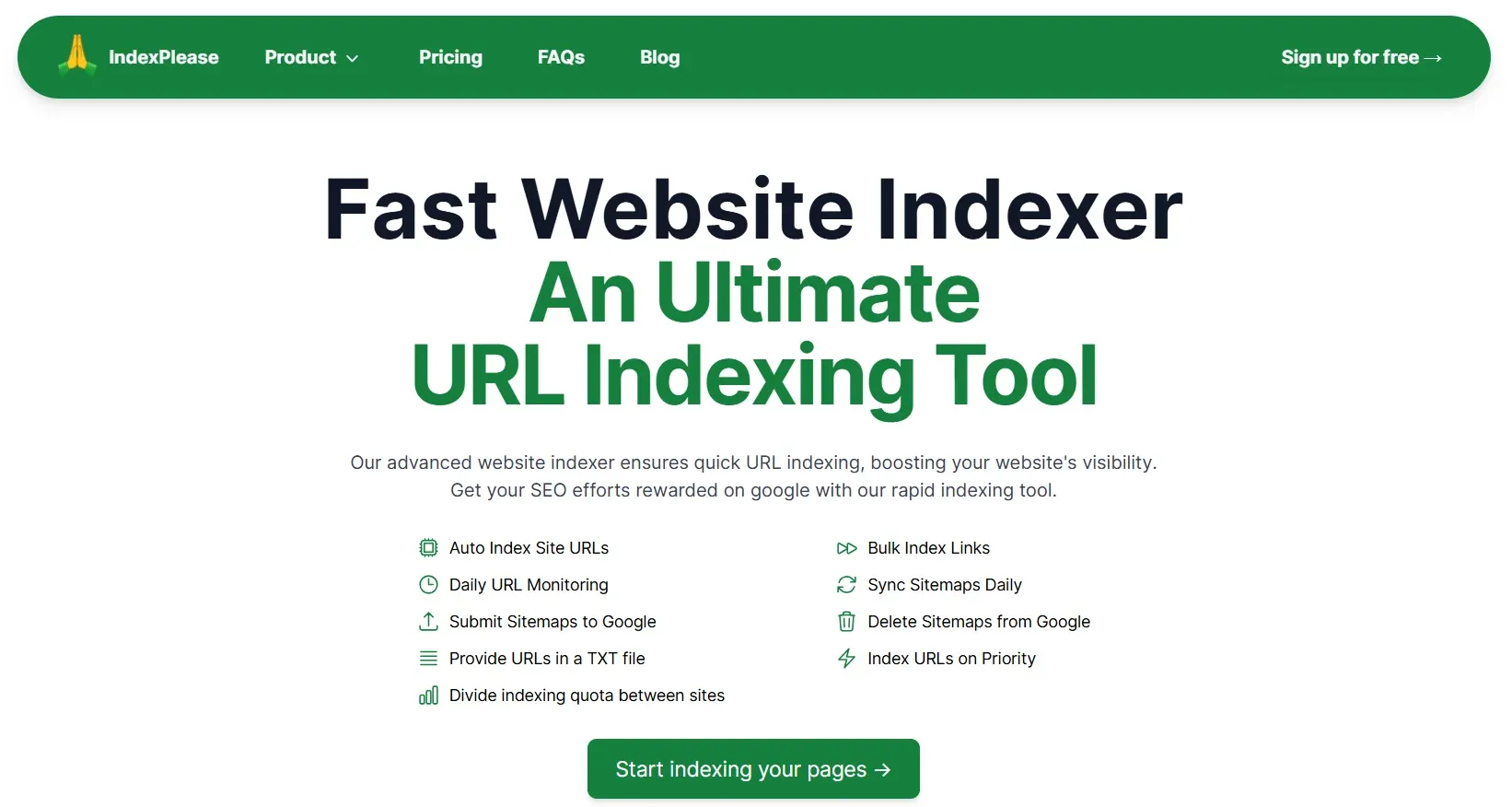
Generative SEO & Answer Engine Optimization: Revolutionizing Website Indexing & Visibility
Remember the thrill of hitting that number one spot on Google? For decades, that was the undisputed goal. We obsessed over technical indexing, climbed the SERP mountain and celebrated every click we earned. But the mountain is shifting beneath our feet.
Forget the old ten-blue-links search results! Now, we’re seeing a smarter interface that actually gives you answers, not just a list of links. Get ready for the Answer Engine era.
This isn’t a subtle change; it’s a fundamental rewrite of the rules. In 2025, success is no longer just about being indexed and ranked. It’s about having your content ingested, understood and cited by the generative AI systems powering search.
Technical SEOs need a broader understanding of visibility to master it.
Beyond Keywords: Defining Generative SEO and AEO

To navigate this, we need a new vocabulary. While often used interchangeably, Generative SEO and Answer Engine Optimization have distinct nuances.
AEO optimizes content as a primary answer source for AI search platforms like Google’s Gemini or Perplexity. AEO shifts the goal from clicks to citations. Focus on authority, accuracy and comprehensive information so AI references you as a source.
Generative SEO (GSEO) is the practical application of Answer Engine Optimization (AEO) for generative AI. It involves structuring information for easy parsing and regeneration by LLMs. AEO is the “why,” and GSEO is the “how.”
Blending the Old School with the New Wave

The path forward isn’t about abandoning technical SEO; it’s about augmenting it. Your daily workflow should now blend the timeless with the cutting-edge.
Continue to master your XML sitemaps and the URL Inspection API. They are the bedrock. But now, layer on a relentless focus on entity-based content.
Develop comprehensive pillar content covering all angles, as AI prioritizes complete answers. Prioritize citing primary sources and data to build a web of credibility that an AI can follow. Write with clarity and structure for humans but with the semantic depth that machines crave.
Practical Strategies for Implementing GSEO and AEO

So, this part is all about practical ways to make your content shine for generative AI and answer engines. If you use these tips, you’ll get more eyes on your stuff and do better in the ever-changing digital world.
We’ll give you real advice and examples for Generative SEO (GSEO) and Answer Engine Optimization (AEO).
1. Understanding the Nuances of Generative AI Content Consumption
Generative AI systems don’t just “read” content; they process, synthesize and reformulate information to provide direct answers. This means:
AI prefers clear, concise, jargon-free text.
Anticipate and directly answer specific user questions within your content, rather than just covering broad topics.
Offer clear, concise, definitive answers to common queries for easier AI extraction.
2. Leveraging Structured Data for Enhanced AI Understanding
Structured data, like Schema Markup, remains a critical component for AI and answer engine optimization. It provides explicit signals about the meaning of your content.
Employ detailed schema markup, including FAQPage, HowTo, Product, Review, Recipe and Event, beyond basic Article or BlogPosting types.
Maintain accurate and complete Schema. Regularly audit for errors to ensure it reflects your content.
Keep up-to-date with new Schema.org types relevant to generative AI and answer engine features.
3. Optimizing for Conversational Search and Voice AI
The rise of voice assistants and conversational AI interfaces necessitates a shift in keyword strategy.
Focus on longer, natural search phrases, as these reflect clearer user intent than short keywords.
Voice search and AI easily understand content with FAQs or direct answers to common questions.
Identify user intent in conversational queries (info, definition, guide, comparison) and tailor content to match.
4. Developing a Robust Content Hub Strategy
Generative AI often seeks to draw information from authoritative and comprehensive sources.
Develop comprehensive, authoritative pillar content.
Create content clusters by linking specific articles to pillar content, demonstrating topical authority and helping AI understand information relationships.
Keep content fresh, accurate and authoritative for AI.
5. Crafting “Answer-Ready” Content Snippets
Answer engines aim to provide immediate, concise answers to user queries.
Start with the most important information, the direct answer or a summary.
Use clear headings and subheadings as signposts for human and AI readers to quickly identify key sections and answers.
Use bullet points and numbered lists for easy AI scanning and information extraction.
6. Monitoring and Adapting to AI-Driven SERPs
The search engine results pages (SERPs) are constantly evolving due to generative AI features.
Analyze Featured Snippets and “People Also Ask” sections to understand AI’s prioritized questions and preferred answer formats.
Track AI summaries of your content and competitors’ to identify areas for clarity and conciseness improvements.
Invest in AI-powered SEO tools for insights into content interpretation, conversational keyword gaps and answer engine optimization.
7. Building Authority and Trust Signals for AI Evaluation
Beyond technical optimization, the underlying authority and trustworthiness of your content are increasingly important for AI.
Prioritize E-E-A-T (Experience, Expertise, Authoritativeness, Trustworthiness) as AI models assess source quality and reliability from vast datasets.
Strong backlinks and internal links boost authority and content relationships.
Show off your content creators’ expertise, especially for important “Your Money or Your Life” (YMYL) topics.
For generative SEO and answer engine optimization, businesses and creators must prioritize AI understanding and content over organic discovery.
The Stakes in 2025: Why This Shift Can’t Be Ignored
AI Overviews and conversational answers are fueling zero-click searches, reducing website visits. If your content isn’t the source, your online presence diminishes, regardless of domain authority or indexing.
This changes the game for a tool like IndexNow. Where once it was a fantastic protocol for speedy indexing, it now becomes the first crucial step in a much longer race.
Getting indexed quickly is simply about qualifying for that race. The real win is having your content structured in a way that makes it indispensable to AI.
What This Means for IndexPlease Users: A Technical Evolution

This might sound like a strategic shift but it’s built on a technical foundation. For those who live in the world of crawlers, indexability and APIs, this is a call to elevate your existing skills.
IndexNow, through IndexPlease, provides instant indexing for new and updated content, accelerating AI discovery and offering a significant advantage.
Instant indexing is vital for AI ranking but post-indexing actions are key. IndexPlease qualifies you but structuring content to be indispensable to AI ensures a real win.
This is where structured data evolves from a rich-result tactic to a non-negotiable language for AI communication. Schema markup is no longer just about getting a pretty star rating in the SERPs. It helps AI models understand the entities, relationships and truths on your page.
Final Thoughts
Future indexing tools will evaluate pages for AI visibility, E-E-A-T and suggest schema for knowledge panels. They’ll also compare your entity graph to competitors via an LLM.
The indexing game has evolved. Our focus shifts from getting pages indexed to proving our content’s truthfulness to answer engines. Embracing Generative SEO and Answer Engine Optimization is key to winning the visibility war of 2025 and beyond.
FAQs
1. Does this mean traditional technical SEO is dead?
Crucial for SEO, flawless indexing, site speed and crawlability remain foundational. GSEO and AEO build upon this strong technical base.
2. How do I measure success in AEO if the goal is zero-click citations?
AI visibility is changing metrics. Monitor Search Console impressions for overview and snippet performance. Brand recognition and direct traffic will be vital for AI-driven authority.
3. Is optimizing for ChatGPT and Google Gemini the same thing?
Show expertise, authority and trustworthiness through well-structured content to enhance visibility across all AI platforms, despite varying algorithms.
4. As a technical SEO, where should I start with GSEO?
Audit your structured data. Go beyond basic markups; implement schema emphasizing expertise (Author, Publisher, Organization) and detailed content (FAQPage, HowTo, Dataset). This directly communicates with AI systems.